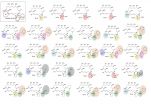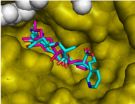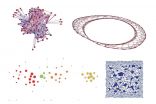(Press-News.org) Malaria is one of the most serious health problems worldwide, registering 200 million clinical cases and more than 600,000 attributable deaths per year, according to information from the World Health Organization in 2013. Given the emerging resistance to the standard treatment most widely used throughout the world, which is based on artemisinin and its analogs, there is a need for new antimalarial compounds.
In this regard, scientists headed by Lluís Ribas de Pouplana, ICREA researcher at the Institute for Research in Biomedicine (IRB Barcelona), report on a new family of molecules and a new system of action to combat the parasite Plasmodium, causal agent of malaria. Specifically, they describe two derivatives of borrelidin that completely remove the parasite load from mice and confer immunological memory to fight future infections. The latter property is an added value that is not shared by current antimalarial drugs. The results are published in the journal Proceedings of the National Academy of Sciences (PNAS).
"We have found that the chemical space of borrelidin offers the opportunity to find very strong and efficient antimalarial drugs. We must now study the action and pharmacological properties of these compounds in order to pave the way for their development as drugs. That is to say, we have to explain why they show low toxicity in human cells and understand how they induce immunological memory," states Lluís Ribas.
Borrelidin: a "new" agent against malaria
Borrelia is the bacteria produced by borrelidin, a toxic molecule for human cells. However, for several years, hundreds of analogues of this compound--small variations made in the lab--have been studied for use in cancer and heart disease treatment. The IRB Barcelona scientists performed an exhaustive analysis of the analogues and identified two--BC196 and BC220--that are useful for combating Plasmodium. The compounds show low toxicity in human cells in vitro and a high efficiency at clearing the parasites both from cells in vitro as well as from animals. "The efficiency of these two compounds and the doses to give to mice are comprable and even better than those of chloroquine, a compound that has been used to treat malaria for 100 years and that is no longer used because of emerging resistance worldwide," explains Ribas.
Objective: to attack the parasite in all phases of the infection
The new molecules act on the protein production machinery of the parasite and they are therefore efficient in all phases of parasite infection in humans. With respect to the specific mechanism of action, the compounds based on borrelidin inhibit one of the 20 tRNA synthetases of the parasite, key molecules for the correct production of the proteins required for growth, replication and infection.
"The synthetases are crucial for the parasite both when multiplying rapidly in the liver and when infecting red blood cells," explains Ribas, head of the Gene Translation Lab at IRB and expert in this fundamental process of life. "Because the compounds attack a general component of the protein production machinery, they are of considerable interest because drugs that act in all the stages of infection are also better for the prevention of the disease".
The findings are part of the final results of the European project Mephitis, coordinated by Ribas, which aims to increase the currently limited number of compounds available to tackle malaria.
"It is most gratifying to end Mephitis with a significant contribution to the pipeline of antimalarial compounds. We will see how far they get, but right now we have a new target and new molecules that work very well in the models tested," concludes the scientist.
INFORMATION:
Reference article:
Analogs of natural amyniacyl-tRNA synthetase inhibidors clear malaria in vivo
Eva Maria Novoa, Noelia Camacho, Anna Tor, Barrie Wilkinson, Steven Moss, Patricia Marín-García, Isabel G. Azcárate, José M. Bautista, Adam C. Mirando, Christopher S. Francklyn, Sònia Varon, Miriam Royo, Alfred Cortés, and Lluís Ribas de Pouplana.
PNAS (8-13 Dec 2014) Early Edition doi:10.1073/pnas.1405994111
This news release is available in German. FRANKFURT. Frankfurt physicists have once again contributed to resolving a disputed matter of theoretical physics. Science has long since known that, contrary to the old school of thought, helium forms molecules of two, three or even more atoms. Exactly what helium consisting of three atoms looks like, however, has been disputed by theoretical physicists for about 20 years. Besides the intuitive assumption that the three identical components form an equilateral triangle, there was also the hypothesis that the three atoms are ...
Patients suffering from the world's most common heart rhythm disorder can have their long-term outcomes significantly improved with an aggressive management of their underlying cardiac risk factors, according to University of Adelaide researchers.
Atrial fibrillation (AF) is increasingly responsible for dementia, stroke and death, and has a significant impact on healthcare costs. With electrical "short circuits" believed to be responsible for the abnormal beating of the heart in AF patients, one currently used treatment is to burn the tissue surrounding the problem area, ...
Mammals that lived during the time of the dinosaurs are often portrayed as innocuous, small-bodied creatures, scurrying under the feet of the huge reptiles. In reality, this wasn't the case, and a new fossil from Madagascar further underscores this point, revealing fascinating perspectives on the growing diversity of Mesozoic mammals. Vintana sertich had previously been described in a preliminary note in November of this year, but a new memoir in the Journal of Vertebrate Paleontology delves far deeper into the morphology and paleoecology of this amazing fossil animal. ...
A simple supplement could be a safe and cost-effective way of reducing heart disease in individuals born with a low birth weight, suggests research from the University of Cambridge. The study, carried out in rats, also raises the possibility of developing a blood test to indicate how much damage there is in the aortas of these individuals.
Researchers at the Institute of Metabolic Science fed low birth weight rats a supplement of the molecule co-enzyme Q (CoQ) and found that in those rats that grew quickly after birth, the supplement prevented cells in the aorta from ...
Techniques now used to reconstruct 3D models based on multiple photos of a building, object or scene can also be leveraged to automatically estimate illumination conditions depicted in a collection of photographs, scientists at Disney Research and Université Laval report.
Everyone knows that objects can look markedly different depending on lighting conditions, the physical characteristics of the objects and the angle at which they are viewed. That makes it difficult for photo editors to insert 3D objects into imagery and make them appear as if they are reflecting ...
The Taj Mahal's iconic marble dome and soaring minarets require regular cleaning to maintain their dazzling appearance, and scientists now know why. Researchers from the United States and India are pointing the finger at airborne carbon particles and dust for giving the gleaming white landmark a brownish cast.
Knowing the culprits in the discoloration is just the first step in cleaning up the Taj Mahal. Scientists now must determine where the particles are coming from to develop strategies for controlling them.
"Our team was able to show that the pollutants discoloring ...
New York, NY, December 9, 2014 - Fourteen years after the attack on the World Trade Center (WTC), a case study in the current issue of Annals of Global Health identifies several elements that have had a critical impact on the evolution of the WTC response and, directly or indirectly, on the health of the WTC-exposed population. The case study also recounts and assesses post-disaster monitoring efforts, recent scientific findings from the World Trade Center Health Program (WTCHP), and explores the implications of these experiences for ongoing and future environmental disaster ...
The global spread of Ebola is due to the complex interactions between individuals, societies, and transportation and trade networks. Understanding and building appropriate statistical and mathematical models of these interactions is vital to responding to the challenges of living in a networked world. There are, of course, many other examples of complex networks -- from national power grids and airline networks to social networks, neuronal networks and protein-protein interactions.
In a new study published in the Beijing-headquartered journal National Science Review, ...
This news release is available in Japanese.
New research published in the Proceedings of The Royal Society A by members of the Mathematical Soft Matter Unit at the Okinawa Institute of Science and Technology Graduate University examines the energies at work in a closed flexible loop spanned by a soap film. While the underlying experiments are simple enough to be replicated in a kitchen sink, the research generates potentially important questions and changes how we think about different disciplines from material science to vertebrate morphogenesis. Aisa Biria and Professor ...
UNIVERSITY OF CALIFORNIA, BERKELEY'S HAAS SCHOOL OF BUSINESS -Too many vehicles on the highway inevitably slow down traffic. On the Internet information highway, consumers value high-speed Internet service, but there is little reason to think broadband traffic congestion will improve if the Federal Communications Commission abandons net neutrality, according to economic research.
In their paper, "The Economics of Network Neutrality," Ben Hermalin, Haas Economics Analysis and Policy Group, and Nicholas Economides, Berkeley-Haas visiting professor from NYU'S Stern School ...







